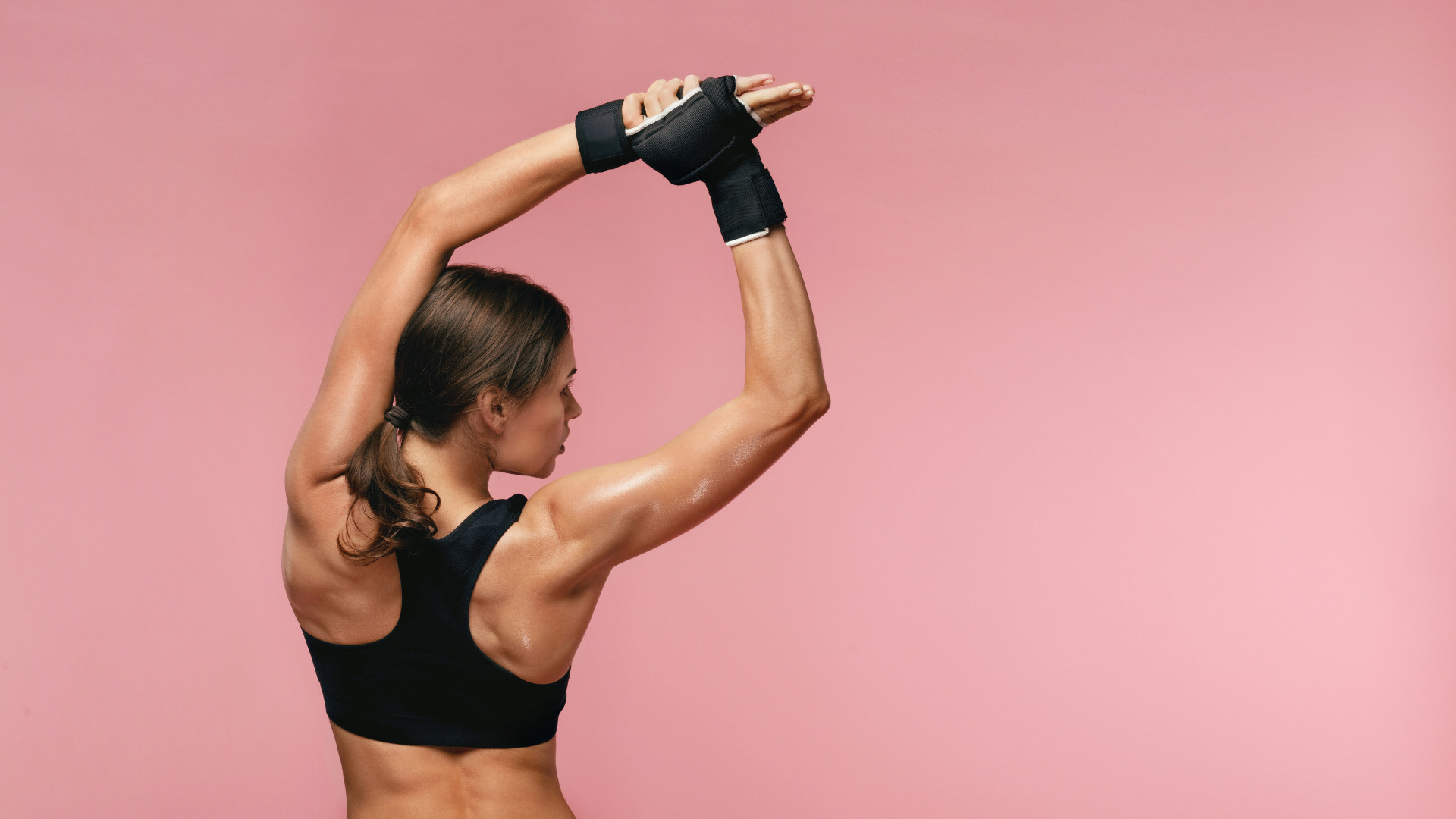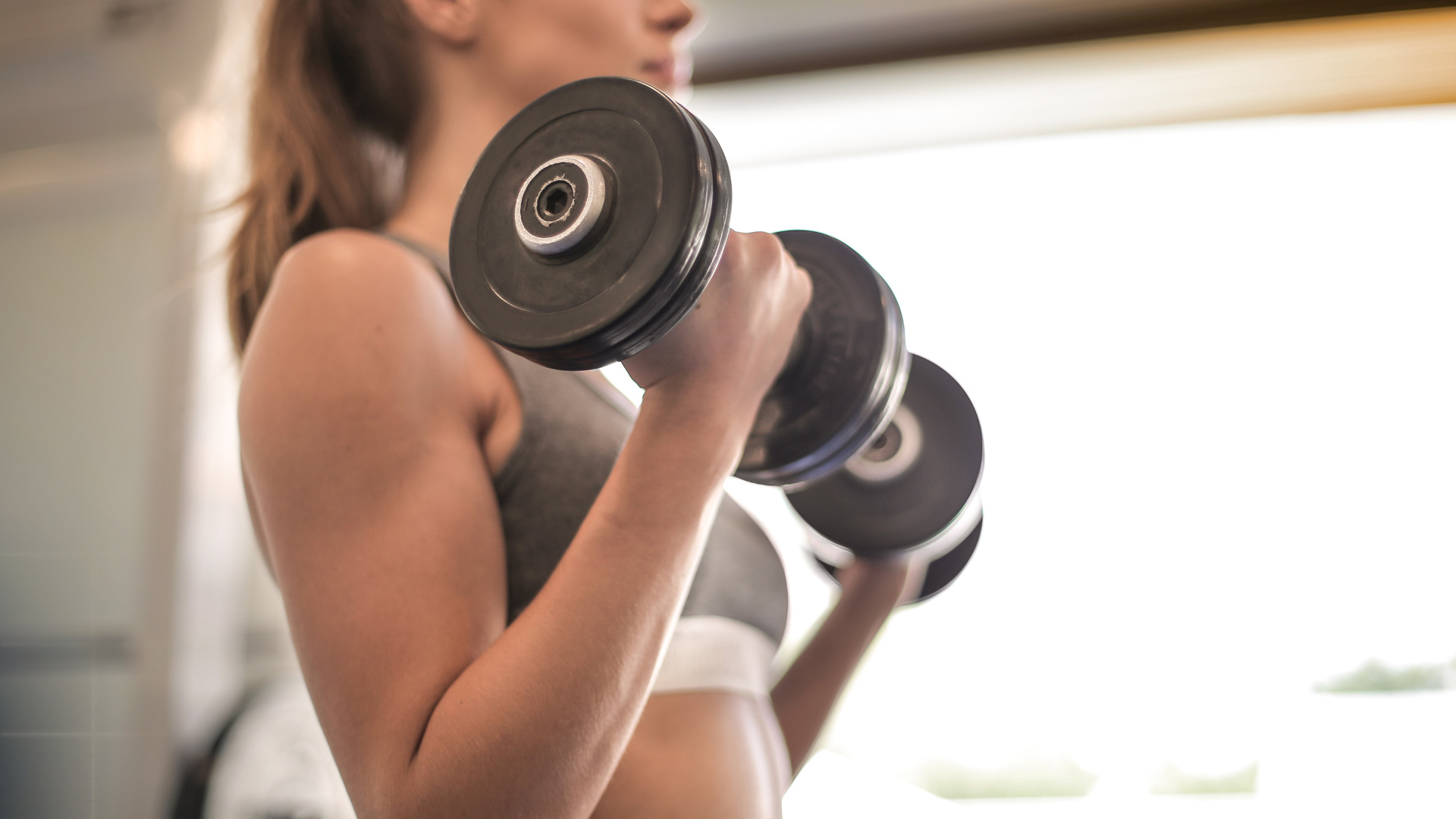5 Effortless Lunch Swaps to Supercharge Your Weight Loss Efforts When it comes to losing those extra pounds, making mindful choices about your meals is crucial. Lunchtime provides an excellent opportunity to make healthy swaps that can help you achieve your weight loss goals. Losing weight also doesn’t have to mean sacrificing flavor or satisfaction during your meals. By making a few smart swaps in your lunch choices, you can support your weight loss journey without feeling deprived. Let’s explore five simple and effective lunch swaps that can help you shed those extra pounds while still enjoying delicious meals. 1. Swap White Bread for Whole Grain Bread White bread lacks the essential nutrients and fiber found in whole-grain bread. Make a simple switch by opting for whole-grain bread for your sandwiches or wraps. Whole grains digest more slowly, providing a steady release of energy and helping to curb those mid-afternoon cravings. Action Step: Next time you prepare a sandwich, choose whole-grain bread as the base. Look for options that list whole wheat or whole grains as the first ingredient. 2. Trade in Fried Foods for Grilled Options Fried foods are often high in unhealthy fats and calories. Swap out that fried chicken or crispy snack for grilled alternatives. Grilled chicken, turkey, tofu, or even vegetables offer the same satisfying flavors with fewer calories and less saturated fat. Action Step: You can try marinating lean protein options and grilling them for a delicious and healthy lunchtime treat. 3. Choose Lean Proteins over Fatty Meats Protein is essential for weight loss as it helps you feel full and supports muscle growth. Swap fatty meats like bacon or sausages for lean protein sources like skinless chicken, turkey, fish, or legumes. These options are lower in calories and can help you stay satisfied until your next meal. Action Step: Plan your lunch around a lean protein source and explore new recipes to keep your meals exciting. 4. Opt for Water Instead of Sugary Drinks Sugary drinks contribute unnecessary calories and can lead to weight gain. Replace sugary sodas, fruit juices, or energy drinks with water. Staying hydrated supports digestion and helps control your appetite. Action Step: Keep a reusable water bottle handy and aim to drink water throughout the day. If you’re craving flavor, add a slice of lemon, lime, or cucumber to your water. 5. Embrace Colorful, Nutrient-Rich Veggies Boost the volume and nutrition of your meals by swapping out calorie-dense sides with colorful vegetables. Opt for salads loaded with leafy greens, bell peppers, tomatoes, carrots, and more. These veggies are packed with vitamins, minerals, and fiber, making them a fantastic addition to your weight-loss lunch. Action Step: Create a vibrant and filling salad by mixing a variety of veggies, lean protein, and a light dressing. Experiment with different combinations to find your favorite flavors. Losing weight doesn’t have to be a daunting task, especially when you can make simple and effective lunch swaps. You can choose from whole grains, lean proteins, vegetables, and healthier beverage options. Plus you can support your weight loss goals without sacrificing taste or satisfaction. These swaps are not only beneficial for your waistline but also for your overall well-being. Remember that sustainable weight loss is about making healthier choices consistently, and these lunch swaps can be a significant step in the right direction. Go ahead and transform your midday meal into a delicious and nutritious way to support your weight loss efforts. Share: Facebook Pinterest Email Social Media Facebook-f Youtube Pinterest Instagram Tiktok Most Popular Get The Latest Updates Subscribe To Our Weekly Newsletter No spam, notifications only about new post, updates. Categories On Key Related Posts
Lose Weight Without Going to The Gym
Lose Weight Without Going to The Gym Losing weight can be a challenging journey, but it doesn’t have to involve extreme diets or deprivation. By adopting a clean eating approach and maintaining a calorie deficit, you can achieve sustainable weight loss while nourishing your body with wholesome foods. In this blog post, we will delve into the principles of clean eating, explain the concept of a calorie deficit, and provide practical tips to help you reach your weight loss goals. Understanding Clean Eating Clean eating is a dietary approach that focuses on consuming whole, unprocessed foods while avoiding or minimizing processed and refined products. The goal is to nourish your body with nutrient-dense foods that provide essential vitamins, minerals, and antioxidants. By eliminating or reducing highly processed foods that are often high in added sugars, unhealthy fats, and artificial ingredients, you can optimize your health and support weight loss. Creating a Calorie Deficit To lose weight, you need to create a calorie deficit, which means consuming fewer calories than your body burns. This forces your body to tap into its fat stores for energy, resulting in weight loss over time. It’s important to note that creating too large of a calorie deficit can be counterproductive and may lead to muscle loss or a slowed metabolism. Therefore, it’s crucial to strike a balance by gradually reducing your calorie intake while ensuring adequate nutrition. Practical Tips for Clean Eating and Calorie Deficit 1. Choose Whole Foods: Base your meals around whole foods such as fruits, vegetables, lean proteins, whole grains, and healthy fats. These foods are naturally low in calories and high in nutrients, making them ideal for weight loss. 2. Portion Control: Pay attention to portion sizes to avoid overeating. Use smaller plates and bowls to visually trick yourself into thinking you’re consuming more food than you actually are. Additionally, practice mindful eating by savoring each bite and listening to your body’s hunger and fullness cues. 3. Track Your Calories: Keeping track of your calorie intake can be a helpful tool in creating a calorie deficit. Numerous mobile apps and websites allow you to log your meals and track your daily calorie consumption. This awareness can help you make informed choices and adjust your portion sizes accordingly. 4. Meal Planning: Plan your meals in advance to ensure you have nutritious options readily available. This can help prevent impulsive food choices and reduce the likelihood of reaching for unhealthy snacks. Include a balance of macronutrients (carbohydrates, proteins, and fats) in each meal to promote satiety and provide sustained energy throughout the day. 5. Stay Hydrated: Drinking an adequate amount of water is essential for overall health and weight loss. Water helps regulate metabolism, aids digestion, and can help curb appetite. Aim to drink at least eight glasses of water per day, or more if you are physically active. 6. Limit Added Sugars and Processed Foods: Minimize your consumption of sugary beverages, desserts, processed snacks, and foods high in added sugars. These items are often calorie-dense but nutrient-poor, making it difficult to maintain a calorie deficit while meeting your nutritional needs. 7. Regular Physical Activity: Now–you don’t have to go to the gym but if Incorporate regular exercise it can enhance your results and even speed it up. Instead of going to the gym you can workout at home by doing strength training, which can help boost metabolism, preserve muscle mass, and improve overall fitness. Or Even outside by engaging in both cardiovascular exercises (such as brisk walking, jogging, or cycling). Losing weight through clean eating and maintaining a calorie deficit is a sustainable approach that promotes overall health while shedding excess pounds. By prioritizing whole foods, portion control, tracking calories, meal planning, staying hydrated, limiting processed foods, and engaging in regular physical activity, you can achieve your weight loss goals effectively Share: Facebook Pinterest Email Social Media Facebook-f Youtube Pinterest Instagram Tiktok Most Popular Get The Latest Updates Subscribe To Our Weekly Newsletter No spam, notifications only about new post, updates. Categories On Key Related Posts
The Best Way to Workout: Guide to Full Body Workouts
Introduction:In today’s fast-paced world, finding time for exercise can be a challenge. However, incorporating a full body workout into your fitness routine can provide numerous benefits. A full body workout targets all major muscle groups, helping you build strength, improve cardiovascular health, and enhance overall fitness. In this blog post, we will delve into the concept of full body workouts, their benefits, and provide a comprehensive guide to help you design an effective routine. What is a Full Body Workout?A full body workout is a training method that engages multiple muscle groups in a single session. Unlike split routines that focus on specific muscle groups on different days, full body workouts aim to work the entire body in one session. This approach allows for efficient use of time and ensures balanced development of all muscle groups. Benefits of Full Body Workouts:1. Time Efficiency: One of the primary advantages of full body workouts is their time efficiency. By targeting multiple muscle groups simultaneously, you can complete a comprehensive workout in less time compared to split routines. 2. Increased Caloric Burn: Full body workouts engage large muscle groups, leading to higher energy expenditure during and after the workout. This increased caloric burn can aid in weight loss or maintenance goals. 3. Improved Muscle Balance: By working all major muscle groups evenly, full body workouts promote balanced muscular development. This helps prevent muscular imbalances that can lead to injuries or postural issues. 4. Enhanced Cardiovascular Fitness: Many full body exercises involve compound movements that elevate heart rate and improve cardiovascular endurance. This dual benefit of strength and cardio training makes full body workouts an excellent choice for overall fitness improvement. Designing an Effective Full Body Workout Routine:When designing a full body workout routine, it is essential to consider various factors such as your fitness level, goals, available equipment, and time constraints. Here are some key components to include: 1. Warm-up: Begin each session with a dynamic warm-up to prepare your muscles and joints for the upcoming workout. Incorporate movements that mimic the exercises you will perform, gradually increasing intensity. 2. Compound Exercises: Focus on compound exercises that engage multiple muscle groups simultaneously. Examples include squats, deadlifts, lunges, push-ups, pull-ups, and overhead presses. These exercises provide maximum efficiency and stimulate overall muscle growth. 3. Resistance Training: Incorporate both bodyweight exercises and resistance training using free weights or machines. Gradually increase the resistance as your strength improves to continue challenging your muscles. 4. Cardiovascular Exercise: Include cardiovascular activities such as running, cycling, or rowing to elevate heart rate and improve endurance. Integrate these exercises between strength sets or dedicate a separate day for cardio training. 5. Core Strengthening: Don’t forget to include exercises that target your core muscles, such as planks, Russian twists, or bicycle crunches. A strong core is essential for stability and overall functional fitness. 6. Flexibility and Mobility: Allocate time for stretching exercises or yoga poses to improve flexibility and maintain joint mobility. This can help prevent injuries and enhance overall performance. 7. Rest and Recovery: Allow adequate rest between workouts to promote muscle recovery and prevent overtraining. Aim for at least one or two days of rest per week. Conclusion:Incorporating a full body workout routine into your fitness regimen can provide numerous benefits, including time efficiency, increased caloric burn, improved muscle balance, and enhanced cardiovascular fitness. By following the guidelines mentioned above and customizing them to suit your individual needs, you can design an effective full body workout routine that helps you achieve total fitness.
Strengthen Your Core with Ease: Standing Ab Workouts
Strengthen Your Core with Ease: Standing Ab Workouts When it comes to fitness, a strong core is essential for overall strength, stability, and balance. While traditional ab exercises like crunches and planks are effective, standing ab workouts offer a unique and dynamic way to engage your core muscles. In this blog post, we will explore the benefits of standing ab workouts, discuss various exercises you can incorporate into your routine, and provide tips for maximizing your results. Benefits of Standing Ab Workouts: Standing ab workouts offer several advantages over traditional floor exercises. Firstly, they engage multiple muscle groups simultaneously, including the rectus abdominis (six-pack muscles), obliques, transverse abdominis, and lower back muscles. This comprehensive engagement helps improve overall core strength and stability. Additionally, standing ab exercises often involve movements that mimic real-life activities such as twisting, bending, and reaching. By training your core in a functional manner, you enhance your ability to perform daily tasks with ease while reducing the risk of injury. Standing ab workouts also provide an opportunity to improve posture. Strengthening the core muscles helps support the spine and maintain proper alignment, leading to better posture and reduced back pain. Standing ab workouts are a great way to engage your core muscles while also incorporating other muscle groups and improving overall stability. These exercises can be performed without the need for any equipment, making them convenient and accessible for people of all fitness levels. In this comprehensive response, we will explore various standing ab workouts that target different areas of the core. 1. Standing Oblique Crunches: To perform standing oblique crunches, stand with your feet shoulder-width apart and place your hands behind your head or cross them over your chest. Engage your core muscles and lift one knee towards the opposite elbow, simultaneously crunching your torso to the side. Return to the starting position and repeat on the other side. This exercise targets the oblique muscles on the sides of your abdomen. 2. Standing Russian Twists: Stand with your feet hip-width apart and slightly bend your knees. Extend your arms straight in front of you, clasping your hands together. Engage your core muscles and rotate your torso to one side, keeping your hips facing forward. Return to the center and then rotate to the other side. To increase the intensity, you can hold a weight or medicine ball in your hands while performing this exercise. Standing Russian twists primarily target the obliques but also engage the entire core. 3. Standing Knee Raises: Stand tall with your feet hip-width apart and place your hands on your hips or extend them out in front of you for balance. Lift one knee towards your chest while maintaining a straight back and engaging your core muscles. Lower the leg back down and repeat on the other side. This exercise primarily targets the lower abs but also engages the hip flexors. 4. Standing Mountain Climbers: Begin by standing with your feet hip-width apart and place your hands on your hips or extend them out in front of you for balance. Lift one knee towards your chest while simultaneously bringing the opposite elbow down to meet it, as if you were climbing a mountain. Return to the starting position and repeat on the other side. This exercise targets the entire core, including the abs, obliques, and hip flexors. 5. Standing Side Bends: Stand with your feet shoulder-width apart and place your hands on your hips or extend them out to the sides. Engage your core muscles and slowly bend to one side, keeping your upper body straight and avoiding any twisting or leaning forward. Return to the center and repeat on the other side. Standing side bends primarily target the oblique muscles. 6. Standing Leg Raises: Stand tall with your feet hip-width apart and place your hands on your hips or extend them out in front of you for balance. Lift one leg straight out to the side as high as you can while maintaining a straight back and engaging your core muscles. Lower the leg back down and repeat on the other side. This exercise primarily targets the obliques but also engages the hip abductors. 7. Standing Woodchoppers: Stand with your feet shoulder-width apart and hold a weight or medicine ball with both hands. Start with the weight at one hip, then engage your core muscles as you swing the weight diagonally across your body, ending above the opposite shoulder. Control the movement as you return to the starting position and repeat on the other side. Standing woodchoppers target the obliques, shoulders, and back muscles. 8. Standing Plank: Stand tall with your feet hip-width apart and place your hands on your hips or extend them out in front of you for balance. Engage your core muscles and lift one foot off the ground, extending it straight behind you while keeping your hips level. Hold this position for a few seconds, then lower the foot back down and repeat on the other side. The standing plank is an effective exercise for strengthening the entire core, including the abs, obliques, and lower back. It is important to note that while standing ab workouts can be effective in strengthening the core, they should be combined with a well-rounded fitness routine that includes cardiovascular exercise, strength training, and flexibility exercises. Additionally, it is always recommended to consult with a healthcare professional or certified fitness trainer before starting any new exercise program, especially if you have any pre-existing medical conditions or injuries. In conclusion, standing ab workouts offer a dynamic and effective way to strengthen your core muscles while improving stability, posture, and functional movement patterns. By incorporating these exercises into your fitness routine and following the provided tips, you can achieve a stronger core and enjoy the benefits of enhanced overall fitness. Share: Facebook Pinterest Email Social Media Facebook-f Youtube Pinterest Instagram Tiktok Most Popular Get The Latest Updates Subscribe To Our Weekly Newsletter No spam, notifications only about new post, updates. Categories On Key
Sculpt Your Body Versatile Training: The Ultimate Guide to Dumbbell Workouts
Sculpt Your Body Versatile Training: The Ultimate Guide to Dumbbell Workouts When it comes to strength training, dumbbells are a versatile and effective tool that can help you achieve your fitness goals. Whether you’re a beginner or an experienced lifter, incorporating dumbbell workouts into your routine can provide numerous benefits. In this comprehensive guide, we will explore the various exercises and workout routines that can be performed using only dumbbells. Benefits of Dumbbell Workouts: 1. Versatility: Dumbbells offer a wide range of exercises that target different muscle groups. From upper body to lower body and core, you can perform a variety of movements to engage multiple muscles simultaneously. 2. Convenience: Unlike bulky gym equipment, dumbbells are compact and portable, making them ideal for home workouts or when traveling. They require minimal space and can be easily stored. 3. Stability and Balance: Dumbbell exercises require greater stability and balance compared to machines or barbells. This helps improve coordination and strengthens the stabilizer muscles. Upper Body Dumbbell Exercises: 1. Dumbbell Bench Press: Lie on a bench with dumbbells in hand, palms facing forward. Lower the weights towards your chest, then push them back up while maintaining control. 2. Dumbbell Shoulder Press: Stand with feet shoulder-width apart, holding dumbbells at shoulder level. Press the weights overhead until your arms are fully extended, then lower them back down. 3. Dumbbell Rows: Place one knee on a bench while supporting your upper body with one hand. Hold a dumbbell in the opposite hand and pull it up towards your chest, squeezing your back muscles. Lower Body Dumbbell Exercises: 1. Goblet Squats: Hold a dumbbell vertically against your chest with both hands. Lower into a squat position by bending your knees and pushing your hips back, then return to the starting position. 2. Dumbbell Lunges: Stand with feet hip-width apart, holding dumbbells at your sides. Step forward with one leg and lower your body until both knees are bent at a 90-degree angle. Push through the front heel to return to the starting position. 3. Dumbbell Deadlifts: Stand with feet hip-width apart, holding dumbbells in front of your thighs. Hinge at the hips, keeping your back straight, and lower the weights towards the ground. Engage your glutes and hamstrings to return to a standing position. Core Dumbbell Exercises: 1. Russian Twists: Sit on the floor with knees bent and feet lifted off the ground. Hold a dumbbell with both hands and twist your torso from side to side, touching the weight to the ground on each side. 2. Dumbbell Plank Rows: Start in a high plank position with each hand gripping a dumbbell. Row one arm up towards your chest while maintaining a stable core and neutral spine. Alternate sides. 3. Dumbbell Woodchoppers: Stand with feet shoulder-width apart, holding a dumbbell with both hands above one shoulder. Swing the weight diagonally across your body, engaging your core muscles. WORKOUT ROUTINE: 1. Full-Body Dumbbell Workout: – Dumbbell Squats: 3 sets of 12 reps – Dumbbell Bench Press: 3 sets of 10 reps – Dumbbell Rows: 3 sets of 10 reps – Russian Twists: 3 sets of 15 reps – Rest for 60 seconds between sets 2. Upper Body Dumbbell Workout: – Dumbbell Shoulder Press: 3 sets of 8 reps – Dumbbell Bicep Curls: 3 sets of 12 reps – Dumbbell Tricep Kickbacks: 3 sets of 10 reps – Dumbbell Chest Flyes: 3 sets of 10 reps – Rest for 60 seconds between sets 3. Lower Body Dumbbell Workout: – Goblet Squats: 3 sets of 12 reps – Dumbbell Lunges: 3 sets of 10 reps per leg – Dumbbell Romanian Deadlifts: 3 sets of 8 reps – Dumbbell Calf Raises: 3 sets of 15 reps – Rest for 60 seconds between sets Dumbbells are a fantastic tool for strength training, offering versatility, convenience, and the ability to target various muscle groups. Incorporating dumbbell exercises into your workout routine can help you build strength, improve stability, and achieve your fitness goals. Remember to start with lighter weights and gradually increase the load as you progress. Stay consistent, challenge yourself, and enjoy the benefits of a well-rounded dumbbell workout routine. Share: Facebook Pinterest Email Social Media Facebook-f Youtube Pinterest Instagram Tiktok Most Popular Get The Latest Updates Subscribe To Our Weekly Newsletter No spam, notifications only about new post, updates. Categories On Key Related Posts





